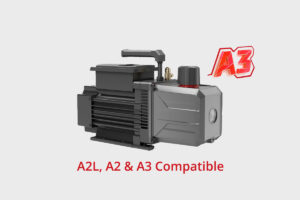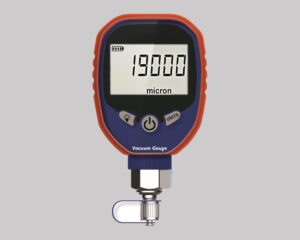The best automotive AC vacuum pump for your vehicle depends on factors like system size, desired evacuation speed, and budget, with 5-7 CFM dual-stage rotary vane pumps being a popular choice for their efficiency and deep vacuum capabilities, ensuring thorough moisture removal and a reliable AC recharge.

How to choose an AC vacuum pump for your car?
Are you feeling overwhelmed by the options for AC vacuum pumps? Making the right choice is crucial for effective refrigerant service. I will help you narrow down what matters most.
To choose an AC vacuum pump, prioritize CFM (cubic feet per minute) rating to match your vehicle’s AC system size for efficient evacuation, consider the number of stages (dual-stage for deeper vacuum), and evaluate portability versus cost. Select a pump that can achieve at least 29.5 inches Hg (approx. 250 microns) for thorough moisture removal.
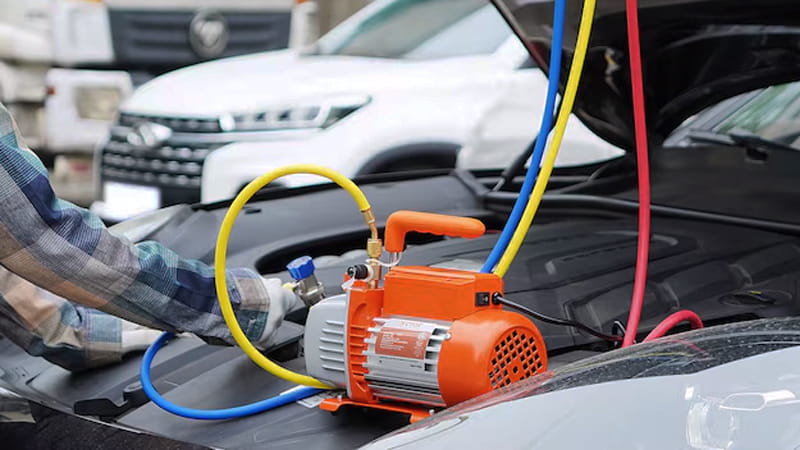
When I advise on AC vacuum pump selection, it always comes down to balancing performance with practicality. The first thing to consider is the CFM (cubic feet per minute) rating. This tells you how quickly the pump can remove air and moisture from your AC system. For typical automotive applications, a pump with a 3 to 7 CFM rating is usually sufficient. A higher CFM means faster evacuation, which is a big time-saver, especially for larger truck or bus AC systems.
Next, consider the number of stages. Pumps are either single-stage or dual-stage. Dual-stage pumps can pull a much deeper vacuum (lower micron level), which is essential for thoroughly removing moisture and non-condensable gases from the system. This directly impacts how efficiently your AC will cool.
Another important factor I have observed recently is the rise of cordless vacuum pumps. These battery-driven pumps offer incredible portability and convenience because they do not require a power outlet, making them ideal for mobile technicians or backyard mechanics who need to work without being tethered to a power source. While their upfront cost tends to be higher than traditional corded (AC) pumps, the convenience and ease of use often justify the investment for professional use.
Always check the ultimate vacuum rating, typically measured in microns, to ensure it can reach the necessary level for a proper dehydration of the AC system (aim for at least 500 microns, preferably lower).
Key Factors in Choosing an Automotive AC Vacuum Pump
| Factor | Description | Importance for AC Service |
|---|---|---|
| CFM Rating (Cubic Feet per Minute) | Pumping speed, how much air it moves per minute | Faster evacuation times for larger systems |
| Number of Stages (Single vs. Dual) | Indicates ultimate vacuum achievable | Dual-stage for deeper vacuum, better moisture removal |
| Ultimate Vacuum (Microns) | Lowest pressure pump can achieve | Critical for removing moisture completely (below 500 microns) |
| Portability (Corded vs. Cordless) | Ease of movement and setup without power outlet | Convenience for mobile use, but cordless are higher cost |
What size vacuum pump do I need for my car's AC system?
For most standard passenger car AC systems, a vacuum pump with a CFM rating of 3 to 5 is sufficient. However, for larger vehicles like SUVs, vans, or light trucks, a 5 to 7 CFM pump is recommended to ensure faster and more thorough evacuation, minimizing wait times and maximizing efficiency.

The size of an AC vacuum pump typically refers to its CFM rating, which is its pumping speed. This directly impacts how long it takes to pull a proper vacuum on your vehicle’s AC system. An average passenger car AC system holds a certain volume of refrigerant and air. If you use a pump with too low a CFM, the evacuation process will take an unnecessarily long time. For example, a 1.5 CFM pump might take over an hour to properly evacuate a typical car AC system, while a 5 CFM pump could do the job in 20-30 minutes.
For small sedans and compact cars, a 3 CFM pump can often get the job done, though it might take a bit longer. When you move to larger vehicles like full-size sedans, SUVs, minivans, or light-duty trucks, their AC systems have larger capacities. This means more air and moisture to remove, so a 5 to 7 CFM pump becomes much more efficient.
For commercial vehicles or heavy-duty trucks with even larger AC systems, some professionals might even opt for 8-10 CFM pumps. The key is to match the pump’s CFM to the volume of the AC system you are servicing. A higher CFM generally means a faster job, which translates to saved time and increased productivity, especially if you are working on multiple vehicles.
Remember, simply reaching a vacuum is not enough; you need to hold that vacuum for a period to ensure all moisture has boiled off and been removed.
Recommended CFM for Automotive AC Systems
| Vehicle Type | Typical AC System Size | Recommended Vacuum Pump CFM | Evacuation Time (Approx.) |
|---|---|---|---|
| Small Passenger Cars | Smaller capacity | 3 CFM | 45-60 minutes |
| Standard Passenger Cars | Average capacity | 3-5 CFM | 30-45 minutes |
| SUVs, Vans, Light Trucks | Larger capacity | 5-7 CFM | 20-30 minutes |
Which type of vacuum pump is best for automotive AC service, and why?
For automotive AC service, oil-lubricated rotary vane vacuum pumps are overwhelmingly considered the best type due to their ability to achieve the deep vacuum levels necessary for thorough dehydration. They are reliable, relatively affordable, and efficient at removing both air and moisture, making them the industry standard for technicians.
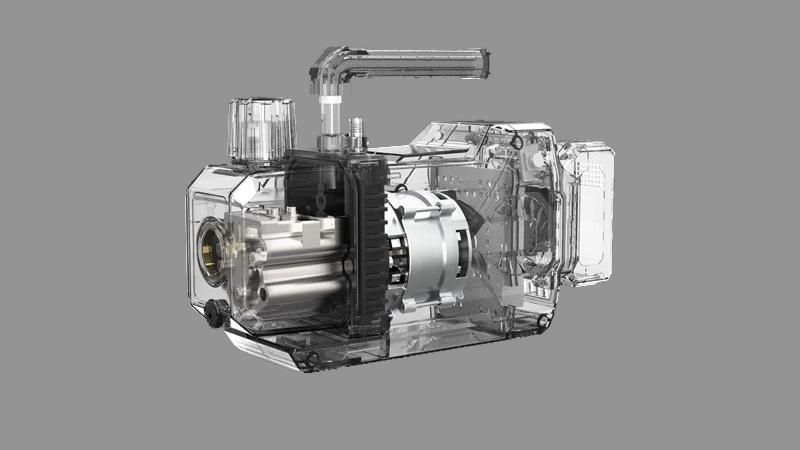
When it comes to automotive AC, the market clearly favors a specific technology: the oil-lubricated rotary vane vacuum pump. This is not by accident; their design inherently suits the demands of refrigerant recovery and evacuation. Rotary vane pumps operate by using vanes that slide in and out of a rotor, trapping gas and compressing it before expelling it. The oil serves multiple purposes: it lubricates the moving parts, seals the internal clearances to achieve deep vacuum, and helps cool the pump.
While other vacuum pump types exist (like dry scroll or piston pumps), they are less common or less ideal for routine automotive AC work. Dry scroll pumps, for instance, are very clean and oil-free, but they are typically more expensive and might not offer the same ultimate vacuum depth for a comparable price point as rotary vane pumps. Piston pumps, especially dry piston pumps, are quieter and require less maintenance, but they generally cannot achieve the deep vacuum necessary for thorough moisture removal from AC systems.
Because moisture (even tiny amounts) is the number one enemy of an AC system, leading to acid formation and component degradation, the ability to pull a very deep vacuum is non-negotiable. This makes the reliable, high-performing rotary vane pump the go-to choice for almost all automotive AC technicians and enthusiasts.
Common Vacuum Pump Types for AC Service
| Pump Type | Mechanism | Pros for AC Service | Cons for AC Service |
|---|---|---|---|
| Oil-Lubricated Rotary Vane | Vanes rotating in oil-filled housing | Deep vacuum, reliable, widespread, good value | Requires oil changes, potential oil misting |
| Dry Scroll | Intermeshing spiral scrolls | Oil-free, clean, quiet | Higher cost, can be less robust for contaminants |
| Dry Piston | Reciprocating piston (oil-free chamber) | Oil-free, very quiet, low maintenance | Limited ultimate vacuum for critical AC evacuation |
Should I get a 1 or 2 stage vacuum pump for my vehicle's AC?
You should generally get a 2-stage vacuum pump for automotive AC service. A 2-stage pump can pull a much deeper vacuum (typically below 50 microns) compared to a 1-stage pump, which is crucial for thoroughly removing all moisture and non-condensable gases from the AC system, preventing future issues like acid formation and poor cooling performance.
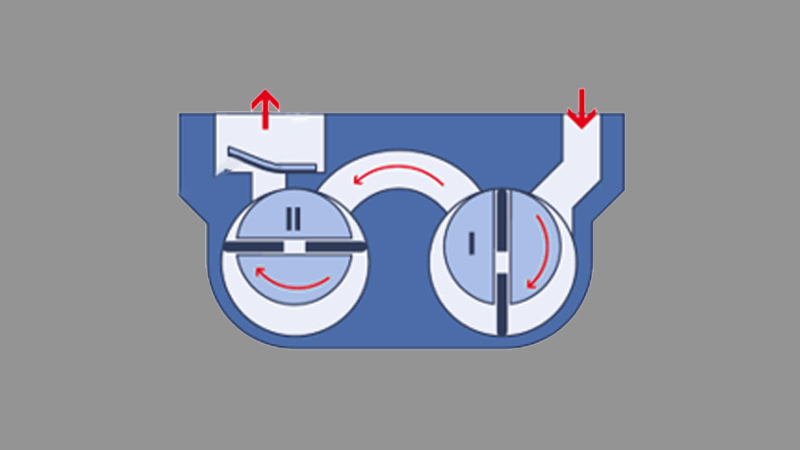
A two-stage vacuum pump works differently. It has two compression stages that work in series. The first stage pulls the rough vacuum, and then the second stage takes that partially evacuated gas and compresses it further, pulling a significantly deeper vacuum. This allows two-stage pumps to achieve ultimate vacuum levels often below 50 microns, sometimes even down to 10-20 microns. This much deeper vacuum ensures that virtually all moisture is boiled off and efficiently removed from the system, leaving a truly dry, clean environment for the new refrigerant.
While a two-stage pump might be slightly more expensive upfront, the added assurance of a truly dry and properly evacuated AC system pays dividends in terms of long-term reliability and peak cooling performance for your vehicle. For any professional or serious DIY mechanic, the minimal extra cost of a two-stage pump is a wise investment for quality AC work.
Single-Stage vs. Two-Stage Vacuum Pumps for AC
| Feature | Single-Stage Vacuum Pump | Two-Stage Vacuum Pump |
|---|---|---|
| Mechanism | One compression stage | Two compression stages in series |
| Ultimate Vacuum | ~200-500 microns | <50 microns (often 10-20 microns) |
| Moisture Removal | Sufficient for basic air removal, less thorough for moisture | Excellent, ensures complete moisture boil-off & removal |
| Cost | Generally lower upfront cost | Slightly higher upfront cost |
| Recommended For | Infrequent DIY, simple systems (less critical) | Professional use, critical systems, all standard automotive AC |
Final Thoughts
- Coolink: TOP 3 Global HVAC Vacuum Pump Manufacturer
- Elitevak: Quality Industrial Vacuum Pump Supplier from China


